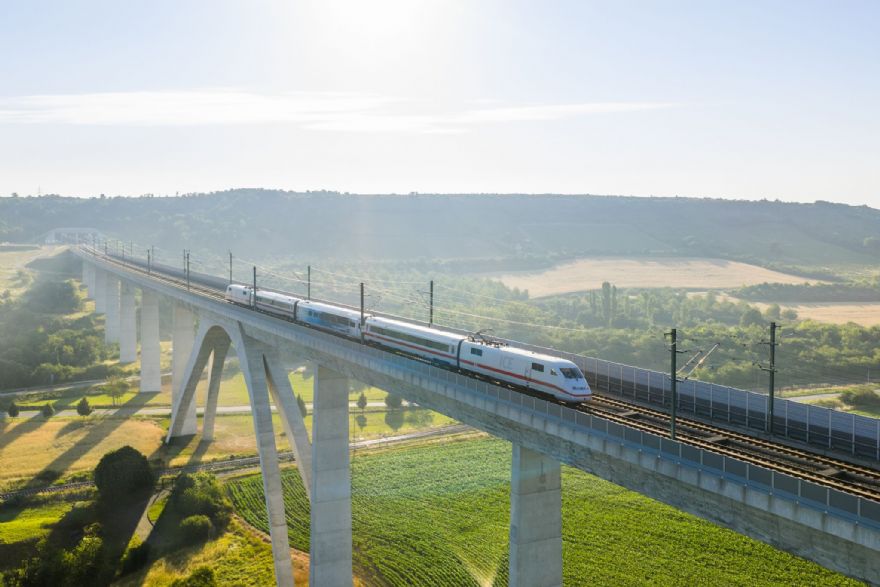 Deutsche Bahn
Deutsche Bahn (DB) and
Siemens Mobility have reached a speed of 405km/h with an ICE (InterCity Express) test train on the high-speed route between Erfurt and Leipzig/Halle. The companies say train runs at speeds above 300km/h are extremely rare on the German rail network and are conducted exclusively for testing purposes.
Philipp Nagl, CEO of DB InfraGO AG, said: “This ICE train has travelled faster than ever before on the Erfurt-Leipzig/Halle line, achieving a new top speed of 405km/h and confirming the high performance of the infrastructure on this high-speed route. After 10 years of continuous operation, we can run at such high speeds without any modifications, proving that infrastructure investments lay the foundation for reliable, sustainable, and high-capacity mobility and logistics across generations. Moreover, the test runs are providing us with crucial data for the refurbishment and maintenance of high-speed routes, as well as for the technical development of high-speed trains.”
Dr Hiie-Mai Unger, chairwoman of the management board of DB Systemtechnik, added: “Driving innovation and preparing rail transport for the future is what we contribute to with our test runs. With our ‘ICE-S’ high-speed measurement train we were able to gather many important findings on acoustics, aerodynamics, ride behaviour, and the interaction between train and track at very-high speeds. These findings support further route refurbishment and will help us optimise rail operations — especially high-speed rail.
“DB Systemtechnik’s ICE-S is primarily used for test and measurement runs to test new lines, inspect infrastructure and carry out various high-speed tests. To precisely analyse and optimise operating conditions on high-speed routes, it is equipped with extensive measurement technology, making the ICE-S an essential component in the continued development and assurance of performance in the German high-speed rail network.”
The Erfurt-Leipzig/Halle route, part of German Unity Transport Project No 8 (VDE 8), entered service in 2015 and is designed for high-speed travel. Before the test runs, the line underwent a comprehensive inspection by experts and remains in excellent condition following maintenance and optimisation work completed on 12 July. This included installing low-maintenance bridge bearings to ensure that ‘the infrastructure on this high-speed line remains reliable and high-performing’.